Rosefsky’s Art Preserves Family, Personal History
The Atlanta artist incorporates found items into her work.
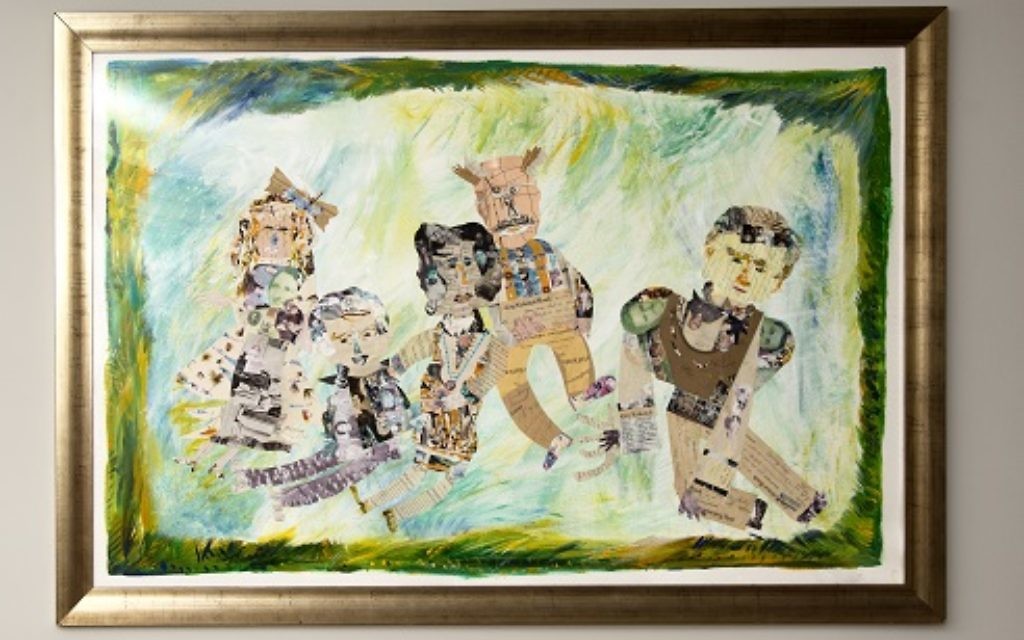
Flora Rosefsky hovers motherly over each of her works, matched by her knowledge of the detail of what she was thinking when she created it.
Mastering interpretive art for 55 years, she embodies family sentiment, recycling, pastel drawings and the celebration of Judaism. These handcrafted statements have her unique stamp and can include checks from 1935, her own ketubah, trimmed family photographs, and an array of symbolized birds that dance in flight, conveying layered meanings reflecting her Hebrew name, Zipporah.
“I favor collage and mixed materials, where, like Henri Matisse, I enjoy ‘drawing with scissors’ without the benefit of pen or pencil,” Rosefsky said. “I cut directly into color, using a variety of papers or recycled family glossy photographs. For mixed materials, I scavenge through local antique shops like Kudzu, where found objects like vinyl 45 records, vintage linens and leather journals support new work.”
Get The AJT Newsletter by email and never miss our top stories Free Sign Up

Jaffe: Were you artistic as a child? Any formal art training?
Rosefsky: A nursery school teacher’s report read, “Flora is a happy child and loves to draw!” I became very interested in art in high school in Long Island — was always on the decoration committees. I did not pursue art as a major in college but majored in elementary education to develop curricula for gifted students, which was a new idea for public schools. My first formal art training came as a mother of four young children in Upstate New York, when I enrolled in a graduate extension program for public school art teachers. The professor called me the “civilian,” since I was the only non-art teacher. Soon after, I enrolled in art classes at Binghamton University before having my own studio. At that point, I began calling myself an artist.

Jaffe: You lean toward Judaic creations?
Rosefsky: I strongly identify my core spirituality and philosophy of life with many of the tenets that revolve around the mystery of the Jewish calendar and the beauty of our traditions. Initially my art centered on family Jewish life cycle or celebrations, in a folk-like illustrative genre, and then moved to illustrating Jewish holidays for greeting cards. I was a very active volunteer in my former JCC which asked to have a solo show of my work. I looked to my Jewish faith as the inspiration to generate ideas for the art, which to this day, continues to give me compelling viewpoints. I lean toward Judaic creations because it brings me tremendous joy to transpose ideas into something one can see, feel and share the beauty and depth of the meaning of Judaism in a tangible, everlasting way.

Jaffe: Who are the other artists you collect?
Rosefsky: Many of my collected works manifest vibrant color, some abstract and some storytelling. In the 1980s, a studio visit spurred a connection with Olga Friedman, a Russian émigré in Ithaca, N.Y. She was a brilliantly talented artist from Leningrad when there was a big movement to free Soviet Jewry. Her large pastel self-portrait holding a jar filled with paintbrushes and another one of her works, “Alphabet Life,” two large, black-and-white woodcut pages, are part of my collection, where they continue to inspire me 30 years after we met.
Other art includes Victor Vasarely’s interactive “Folklore Participations No. 1” and the ultimate toy, a sculpture over 5 feet tall, “Rollie,” similar to the work of Rube Goldberg. Collecting visual art, from museum gift shops, galleries, family and friends who are artists, enriches everyday life.
If you find something you love that speaks to you, don’t worry if it will fit in a particular décor or if the colors match; you will find a good home for the work.

Jaffe: What happens at your studio? How long does it take to create a piece?
Rosefsky: My studio is a refurbished car repair shop in Decatur. It’s a special work space with many art books and boxes of collage ephemera (found papers), fabrics and mixed materials. WABE radio is turned on. The shower curtain “door” may be ajar. Light streams in from oversized windows. If I can’t wait for the creative muse to appear, then I will do a series of drawings or paper cutout exercises or wade through a book. As a place where other artists also have studio spaces, we respect each other’s need for privacy to concentrate, yet there are times when we give each other moral support.
“How long to create a piece?” Seventy-six years! A lifetime of experience, education, ability and imagination to create work, which can turn out to be quite wonderful after a short time or not so great even after a longer period of time. So there is no right answer here.

Jaffe: What do you consider your most special work?
Rosefsky: If I had to pick one, a large piece titled “Schach No. 2,” a collage with mixed materials that is currently on view at the Different Trains Gallery in Decatur. I used my father-in-law’s ephemera letters, papers, stamps, current newspaper clippings to create a textured sukkah roof exploring the temporary nature of our physical houses.

Jaffe: What does the future look like? What’s next on your to-do list?
Rosefsky: I will continue to explore the themes of Sukkot, a Jewish festival that strongly resonates with me, while also continuing to work on art projects with ART+ACTIVISM and the Women’s Caucus for Art, where visual art becomes a vehicle for raising consciousness on important issues such as sex and human trafficking. I am also interested in promoting appreciation for those of various faiths and traditions, conducting more interfaith art workshops, and developing Judaic art education projects for families and children.
And I would love to illustrate a book.
To encapsulate her frivolity, a large, off-the-wall, black-and-white piece over her master bed traces the words “One man’s witch is another man’s fairy.”
Rosefsky is Atlanta’s artistic muse and good fairy.
-
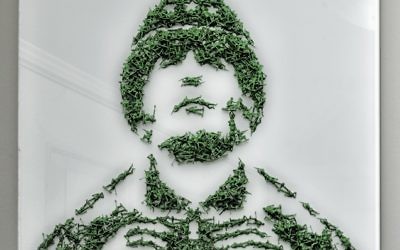
- Dan Cohen, Flora Rosefsky’s son-in-law, composed this collage of Gen. George Patton from plastic toy soldiers. (Photo by Duane Stork)
-
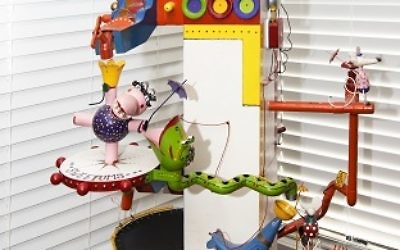
- The Rube Goldberg-esque sculpture “Rollie,” which is over 5 feet tall, is the ultimate toy. Flora Rosefsky enjoys collecting visual art from museum gift shops and galleries. (Photo by Duane Stork)



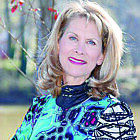
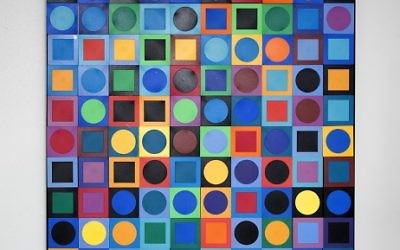
comments